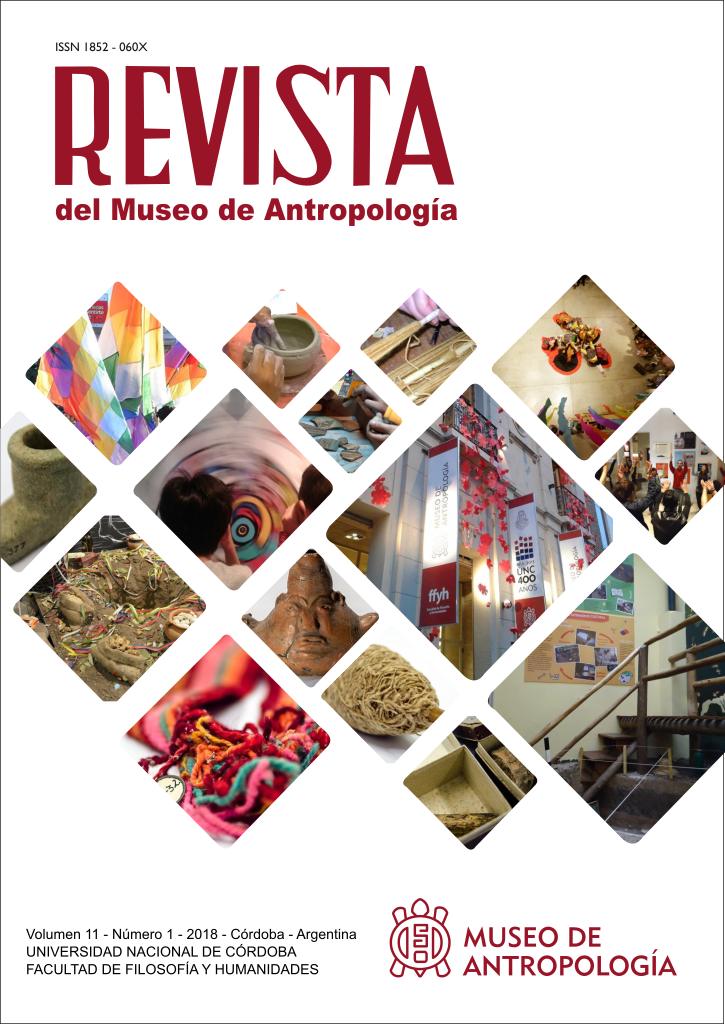Protocol for thin section preparation of non decalcified human bone tissue
DOI:
https://doi.org/10.31048/1852.4826.v11.n1.17007Keywords:
protocol, thin section, human bone remains, HistologyAbstract
Making thin sections from fossil and archaeological materials is usually a highly time consuming and expensive task. Also, the creation of a laboratory with necessary characteristics for the development of established protocols is also expensive. This paper presents an alternative protocol for obtaining thin sections of human bone samples from archaeological sites with the aim of applying it to microstructural analysis. The procedures for obtaining thin cuts that are detailed here are within the reach of newly formed laboratories. In the first place a femur, a tibia and a first rib n adult individual from a contemporary cemetery was measured and recorded with digital images. Fragments of 1 cm of bone were them extracted. Molds and casts of the extracted samples were prepared before thin section preparation. The obtained results were optimal for the observation of the microstructural bone features. With the appropriate modifications (set time, abrasive grading according to the hardness of the material, impregnation, etc.) this protocol could be useful for several kinds of samples (extant, archaeological and even fossil ones).Downloads
References
Assis, S., A. Santos y A. Keenleyside. 2016. Paleohistology and the study of human remains: past, present and future approaches. Revista Argentina de Antropología Biológica, 18(2), 1–17.
Buikstra, JE., DH. Ubelaker. 1994. Standards for data collection from human skeletal remains. Proceedings of a seminar at the Field Museum of Natural History. Organized by J. Haas. Arkansas Archaeological Survey Research Series No. 44
Cambra-Moo, O., CN. Meneses, MA. Rodríguez Barbero, O. García Gil, J. Rascón Pérez, S. Rello-Varona, MC. Martín y A. González Martín. 2012. Mapping human long bone compartmentalisation during ontogeny: A new methodological approach. Journal of Structural Biology 178: 338-349.
Chinsamy, A., MA. Raath. 1992. Preparation of fossil bone for histological examination. Palaeontologia Africana 29: 39-44.
Chinsamy Turan, A. 2005. The Microstructure of Dinosaur Bone. Johns Hopkins University Press, Baltimore and London.
Desántolo B., V. Bernal. 2016. Los estudios de histología ósea en antropología biológica. Revista Argentina de Antropología Biológica, 18(2), 2015–2017.
Desántolo, B. 2012. “Validación metodológica para la estimación de edad en restos óseos humanos adultos: análisis histomorfométricos”. Facultad de ciencias médicas, Universidad Nacional de La Plata, Argentina, 187.Tesis Doctoral. SEDICI (Repositorio Institucional de la UNLP) http://hdl.handle.net/10915/51327.
Comparison of 3D Landmark and 3D Dense Cloud Approaches to Hominin Mandible Morphometrics Using Structure-From-Motion. Archaeometry 59 (1): 191-203
García-Martínez, D., García Gil, O., Cambra-Moo, O., Canillas, M., Rodríguez, MA., Bastir, M. y Gonzalez Martín, A. 2017. External and internal ontogenetic changes in the first rib. American Journal Of Physical Anthropology 1-13
Gosman, JH. y Ketcham, RA. 2009. Patterns in Ontogeny of Human Trabecular Bone From SunWatch Village in the Prehistoric Ohio Valley: General Features of Microarchitectural Change. American Journal Of Physical Anthropology 138:318–332
Hollund, H., M. Jans, M. Collins, H. Kars, I. Joosten y S. Kars. 2012. What happened here? Bone histology as a tool in decoding the postmortem histories of archaeological bone from Castricum The Netherlands. International Journal of Osteoarchaeology 22:537-548. doi:10.1002/oa.1273
Jans, MM., H. Kars. 2002. In situ preservation of archaeological Bone: a histological study within a multidisciplinary approach. Archaeometry, 44 (3): 343–352.
Katz, D., M. Friess. 2014. Technical Note: 3D From Standard Digital Photography of Human Crania-A Preliminary Assessment. American Journal of Physical Anthropology 154 (1): 152-158.
Lander, SL., D.Brits y M. Hosie. 2014. The effects of freezing, boiling and degreasing on the microstructure of bone. HOMO-Journal of comparative human biology 65, 131-142.
Maggiano IS., CM. Maggiano, JG. Clement, CDL. Thomas, Y. Carter, DML. Cooper. 2016. Three-dimensional reconstruction of haversian systems in human cortical bone using synchrotron radiation-based micro-CT: morphology and quantification of branching and transverse connections across age. Journal of Anatomy 228(5): 719-732.
Nacarino Meneses, C., O. Cambra-Moo, MA. Rodríguez Barbero y A. González Martín. 2012. Aportaciones de la paleohistología humana al estudio de los biomateriales. Boletín de la sociedad española de cerámica y vidrio 51 (6): 313-320.
Padian K., ET. Lamm. 2015. Bone histology of fossil tetrapods. Advancing methods, analysis, and Interpretation. University of California Press. 285 pp
Robling AG., SD. Stout. 2008. Histomorphometry of human cortical bone: applications to age estimation. En Katzenberg MA y Saunders SR . Biological anthropology of the human Skeleton. pp 149-182. New York: Willey Liss. Inc.
Rösing, FW. M.Graw, B.Marré, S.Ritz-Timme, MA. Rothschild, K.Rötzscher, A.Schmeling, I. Schröder y G.Geserick. 2007. Recommendations for the forensic diagnosis of sex and age from skeletons. HOMO- Journal of comparative human biology. 58. 75-89.
Schultz, M. 2001. Paleohistopathology of bone: a new approach to the study of ancient diseases. Yearbook of Physical Anthropology 44, 106–147
Singh IJ., DL. Gunberg. 1970. Estimation of age at death in the human males from quantitative histology of bone fragment. American Journal of Physical Anthropology. 33 (3):373-392
Ubelaker, DH. 1998. The evolving role of the microscope in Forensic Anthropology. Reichs KJ, editor. Forensic osteology: advances in the identification of human remains. Springfield: Charles C. Thomas. P. 514-532.
Downloads
Published
Issue
Section
License
Those authors who have publications with this Journalaccept the following terms:
a. Authors will retain their copyrights and guarantee the journal the right of first publication of their work, which will be simultaneously subject to the Creative Commons Attribution License (Licencia de reconocimiento de Creative Commons) that allows third parties to share the work as long as its author and his first publication in this journal.
b. Authors may adopt other non-exclusive licensing agreements for the distribution of the version of the published work (eg, deposit it in an institutional electronic file or publish it in a monographic volume) provided that the initial publication in this journal is indicated.
c. Authors are allowed and recommended to disseminate their work on the Internet (eg in institutional telematic archives or on their website) before and during the submission process, which can lead to interesting exchanges and increase citations of the published work. (See The Effect of Open Access - El efecto del acceso abierto)












